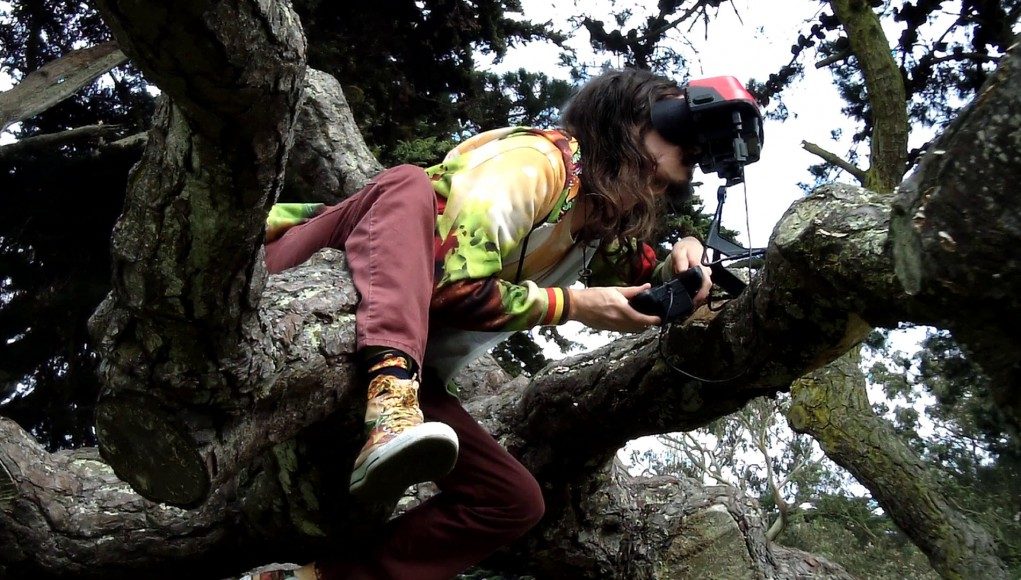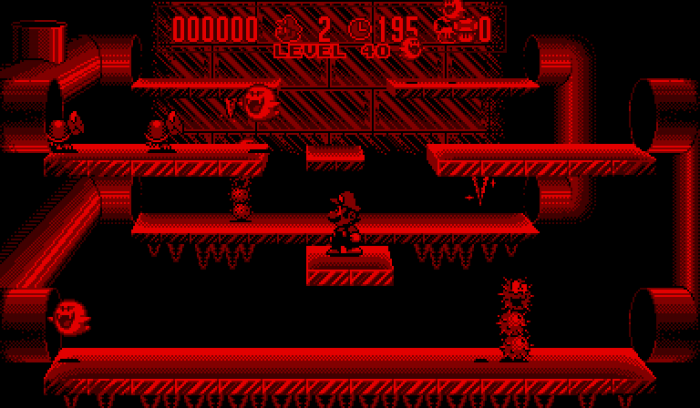Going into last week’s GDC 2015, we knew VR would be a big deal. We knew we’d see the latest VR headsets, controllers, games, and software, but we didn’t expect to see Nintendo’s 1995 Virtual Boy headset, nor the cheeseburger-themed man toting it around the expo floor.
The moment we spotted him we knew we had to talk to him. It isn’t every day that you see a Virtual Boy, Nintendo’s famously failed gaming headset, nor one wielded by someone like Michael “Burgin” Borel, a man clearly dedicated to… whatever it was that he was doing on the GDC show floor (we learned later that he’s actually quite the artist).
We found Borel standing in line for what would be his first time trying the Oculus Rift.
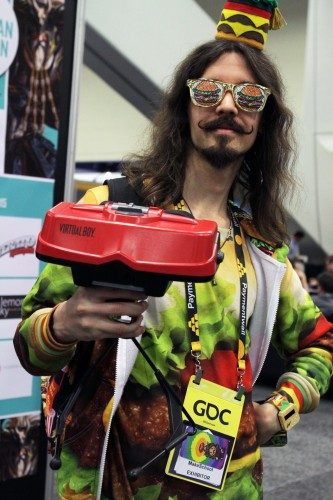
Five pound Virtual Boy in hand, he was dressed head to toe in cheeseburger-themed fatigues. No expense was spared. Cheeseburger hat: check. Cheeseburger glasses: check. Cheeseburger shirt: check. Sweatshirt, watch, pants, socks, and shoes. Check, check, check, check, and check. We weren’t brave enough to inquire, but I’d put my money on cheeseburger undergarments as well. His attention to cheeseburger detail was matched by his well spokenness and his enthusiasm for the headset in his hand.
Borel was curiosity in human form. “Why is this cheeseburger man toting a Virtual Boy on the GDC floor?” We had to know. So we asked him.
The answer we got back was something along the lines of ‘Just spreading the word of the greatest headset ever made’. And while we took this and further accolades of the failed 1995 system as sarcasm, Borel never broke character. A man truly dedicated to his craft.
So we asked him to share with the world his thoughts on Virtual Boy compared to its newfangled competitors. Take it away, Burgin’.
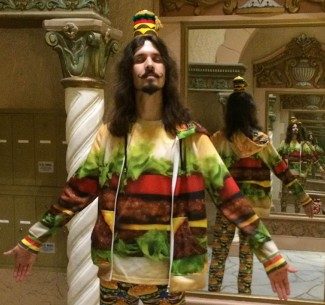 Michael Borel is an artist, juggler, burgermancer, and more. He curates and shares a growing collection of classic and obscure video games. Originally hailing from Austin, Texas, he can now be spotted exploring the streets of San Francisco, sowing creative chaos wherever he goes.
Michael Borel is an artist, juggler, burgermancer, and more. He curates and shares a growing collection of classic and obscure video games. Originally hailing from Austin, Texas, he can now be spotted exploring the streets of San Francisco, sowing creative chaos wherever he goes.
Joining Oculus on the immersive frontier, Sony and Valve were showing off their own VR headsets at GDC 2015, but they are late to the game. VR technology was perfected in 1995 with the release of Nintendo’s Virtual Boy.
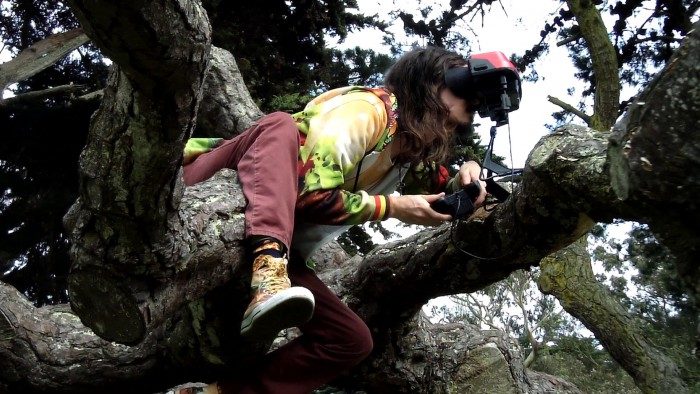
Fully Portable Experience
Unlike newer devices, which must be tethered to a separate computer or latch on to a smartphone, the Virtual Boy is a self-contained and truly portable system. Weighing a sleek 5 pounds and requiring a mere 6 AA batteries, the Virtual Boy provides 4 unadulterated hours of on-the-go VR goodness. What’s the point of having a VR headset if you can’t show it off to your friends at the park?
Two Awesome Colors: Red and Black
Who wants millions of colors when you only need two? The dichromatic Virtual Boy perfects VR by distilling the experience down to the most necessary of colors: blood red and abyssal black.
It’s Safe to Use… Mostly
The Virtual Boy’s automatic pause feature literally pauses the game every ten minutes, thereby preventing eye-straining injuries that will surely become commonplace with the adoption of newer VR devices.
You Can Buy It Right Now
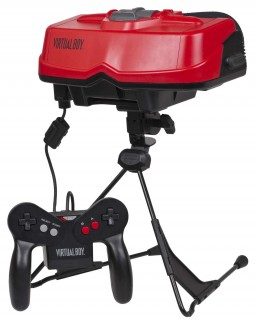 Another day, another vague idea of when devices like the Oculus Rift and HTC Vive will finally launch. Nintendo had the decency to already release the Virtual Boy, which can easily be found today on eBay or in your cousin’s attic. With an extensive library of 22 (!) complete games, you’ll have countless hours of fun while you wait for flashier headsets to hit the market. So what are you waiting for?
Another day, another vague idea of when devices like the Oculus Rift and HTC Vive will finally launch. Nintendo had the decency to already release the Virtual Boy, which can easily be found today on eBay or in your cousin’s attic. With an extensive library of 22 (!) complete games, you’ll have countless hours of fun while you wait for flashier headsets to hit the market. So what are you waiting for?
Closing the Rift
I spent most of my time at GDC showcasing the Virtual Boy, but I took a break to give the Oculus Rift a try. The headset itself was light and comfortable, allowing me to fully test out this suspicious “headtracking” technology I keep hearing about.
In several of the demos I was greeted with realistic graphics, but the environments felt too big or too small. Even the slightest imbalance in this regard was a bit jarring, and marred an otherwise immersive experience. Indeed, creating an accurate sense of scale may be one of the tougher challenges upcoming developers will face (besides beating the Virtual Boy, of course).
Other demos eschewed realism, presenting me with tiny cartoonish realms floating in blank space. I could physically ‘lean in’, peering closer at the miniature events unfolding, and the effect was like examining a living diorama in action.
Oculus saved the best for last: a close encounter with a T. Rex in a museum (thankfully Ben Stiller did not show up). I looked up in awe, I flinched, I crouched, and I spun around to watch the beast slink off into the shadows. The headtracking capabilities were at their best here, and I must grudgingly concede that this is one category in which the Rift beats the Virtual Boy.
Ultimately I was fairly impressed, but uninterested in purchasing my own… until I found out it could emulate Virtual Boy games. I’ll take one in red and black, please!
Additional reporting by Scott Hayden.

